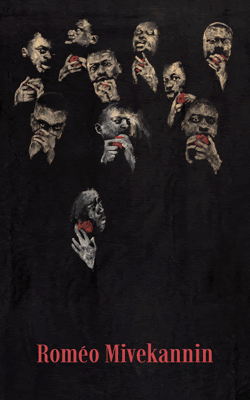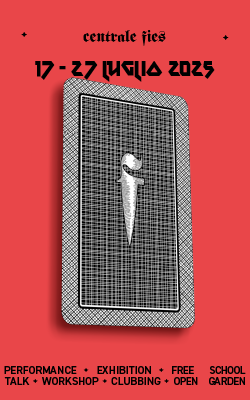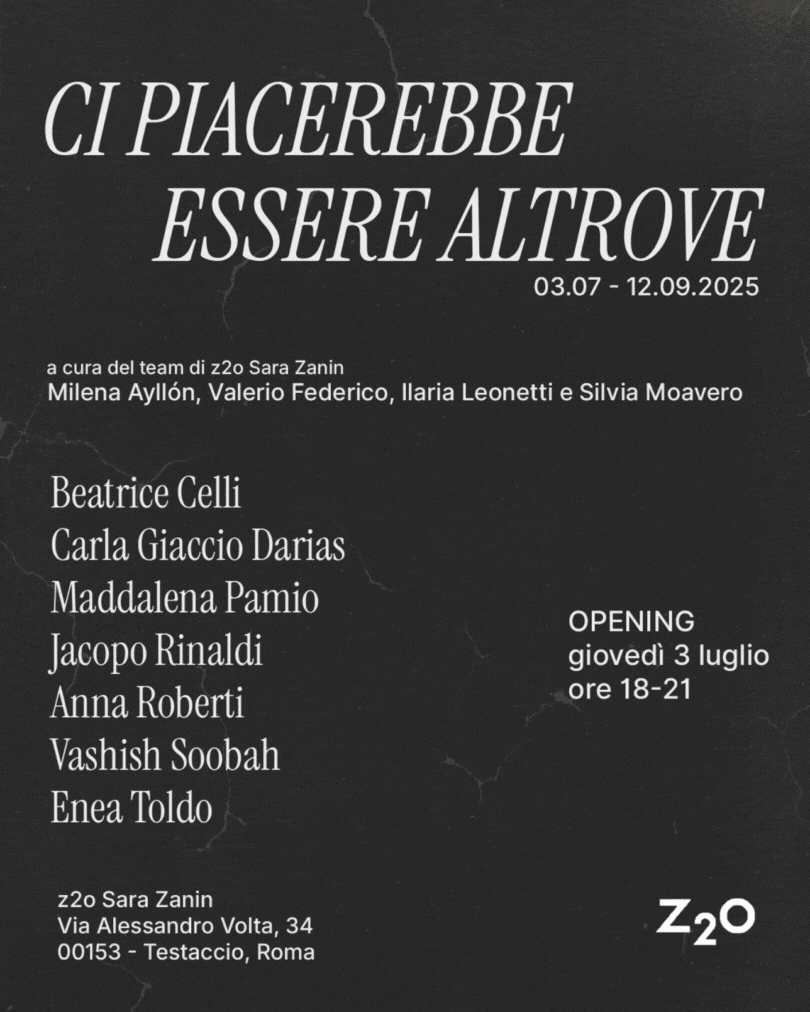(Scroll down for the English Version)
Il vincitore del Premio Lorenzo Bonaldi per l’Arte-EnterPrize ha finalmente un nome, un sorriso contagioso e l’emozione disarmante della vittoria che gli colora il viso: Sam Korman, il curatore ventiseienne che dal White Flag Projects di St. Louis è arrivato a Bergamo, chiamato a partecipare alla VII edizione del Premio istituito dalla GAMeC, realizzerà il suo progetto di mostra, dal titolo Mississippi, negli spazi del museo bergamasco, nell’anno a venire.
Mississippi è stato decretato il progetto vincente, scelto all’unanimità dalla giuria, composta da Pierre Bal-Blanc, Mirjam Varadinis, Giacinto Di Pietrantonio e Stefano Raimondi, per la sua coerenza concettuale e curatoriale, nonché per l’intuizione creativa del progetto di mostra, interessante sfida per Bergamo e il suo pubblico talvolta troppo conservatore.
Tre artisti americani – Jacob Kassay, Elaine Cameron-Weir e Josh Tonsfeldt – e il designer David Knowles si alterneranno nel project-space del museo, che per l’occasione si trasformerà in una sorta di spazio di residenza e lavoro: un open studio, aperto al flusso dell’azione creativa.
Qui un abstract dei progetti presentati. ?
Valentina Gervasoni ha intervistato Sam Korman
Valentina Gervasoni: Quali caratteristiche positive ha per te la “residenza” nella pratica artistica e curatoriale?
Sam Korman: La mia opinione è confusa, anche se sono incline allo scetticismo; questo perché c’è una grande varietà di residenze disponibili in una vasta gamma di settori, che offrono maggiori o minori opportunità, risorse, e possibilità per altre residenze, o una semplice vacanza, ma non voglio fare un commento sulle residenze in generale. Per alcuni questo sembra essere il migliore, o talvolta il solo, modo per fare un lavoro e modellano su misura di questo sistema la loro pratica. Pur rispettando che ciò permetta loro di realizzare un lavoro, non invidio necessariamente l’insicurezza che si crea rimbalzando da una residenza all’altra. Per altri, le residenze rappresentano un’opportunità di fare rete o di impegnarsi con un nuovo metodo o con un insieme di risorse. In entrambi i casi, queste residenze offrono la possibilità di proseguire la carriera di un artista in un modo o in un altro; spero che queste siano ben finanziate e che gli artisti non debbano pagare per tale compenso. Esistono troppe residenze, opzioni e strutture di ricerca perché io possa elencarle qui e, francamente, devo confessare la mia ignoranza circa l’esistenza della maggior parte di queste e di come e per chi esse siano strutturate.
Nel caso di Mississippi, progetto presentato per la GAMeC, la struttura della mostra è, per definizione rigorosa, una residenza: gli artisti vivranno e lavoreranno a Bergamo per tre settimane ciascuno e saranno dotati delle risorse finanziarie necessarie per farlo, così come di uno studio e di uno spazio vitale. Tuttavia, utilizzando lo spazio espositivo come studio e frammentando la durata della mostra in tre residenze conseguenti, il lavoro artistico e, in particolare, il tempo di studio sono la mostra, e piuttosto che l’istituzione paghi per un prodotto finito, gli esiti di questa residenza-con-mostra sono molto più aperte a una conclusione. I vantaggi di questa mostra sono ancora da vedere (poiché deve ancora accadere), ma non vedo l’ora di inaugurare lo spazio espositivo vuoto alla GAMeC durante l’apertura e vederlo riempire.
V.G.: Metaforicamente con Mississippi crolla lo spazio del museo. Qual è il tuo rapporto con le istituzioni pubbliche del sistema Arte? Prima d’ora hai mai lavorato per qualcuna di loro?
S.K.: Sono cresciuto a Buffalo, NY e per quanto potevo sono andato alla Albright- Knox Art Gallery. La loro missione, a partire dalla fine del XIX secolo, è stata quella di collezionare artisti emergenti . Questo, unito a un gusto davvero preveggente, ha fatto sì che il museo abbia raccolto importanti opere dei grandi movimenti artistici americani ed europei che da fine Ottocento hanno attraversato la seconda metà del XX secolo, così come importanti collezioni dell’America latina di questo periodo. Inoltre, ogni venerdì dopo le ore 15 l’ingresso era gratuito, il che significava che da adolescente potevo permettermi di andare più volte al mese. Qui è dove ho imparato davvero a conoscere l’arte e la visione della Knox è ancora lo standard con cui valuto i musei .
Attualmente lavoro presso uno spazio espositivo no-profit a St. Louis chiamato White Flag Projects. Siamo nel bel mezzo del paese e il nostro pubblico è limitato. Ma siamo in grado di offrire notevoli opportunità agli artisti emergenti e mid-career lontano dalle coste, mettendo a loro disposizione uno spazio, sia fisico sia geografico, di sperimentazione all’interno della loro pratica. Sia con la Knox sia con White Flag, i benefici di questa tipologia di lavoro si percepiscono solo a lungo termine: guardare come i tempi cambiano (nel caso della Knox), o come la carriera di un giovane artista cresce (nel caso di White Flag), rende possibile guardare il tuo contributo personale svilupparsi nella storia.
V.G.: Come nasce Mississippi? Come pensi che si concluderà?
S.K.: Per essere onesti, la maggior parte del mio lavoro inizia con una battuta e cresce da ciò che lo scherzo rivela. La mostra ha avuto inizio con l’idea di presentare una mostra dal titolo Mississippi in Italia e dall’incongruenza tra questo riferimento profondamente americano e la sua apparizione all’estero. Così si sono sviluppate altre connessioni: il ruolo del fiume Mississippi in Le avventure di Huckleberry Finn di Mark Twain, le idee di processo, trasformazione, flusso, conversazione e auto-realizzazione; di trasporto tra punti, di canali commerciali; di ridefinizione geografica; del tempo geologico, dei fiumi e del loro ruolo nello sviluppo dell’antica civiltà dei nativi americani nella zona che ora comprende Illinois e Missouri. In breve, tutte le metafore adatte per il tipo di mostra da realizzare e dei risultati che sono interessato a perseguire. Senza essere irriverente, lo scherzo apre davvero il fondamento per questo tipo di pensiero: il disordinato, quasi fisiologico, piacere nel riconoscere che nulla è fisso… e il libro di Twain è maturato con loro. Nonostante (o, potrei obiettare, a causa del) la sua origine con una battuta, questa mostra presenta questioni serie: come possono le istituzioni supportare gli artisti? Come può il curatore partecipare al lavoro di un artista? Cosa rivela l’istituzione al suo pubblico? In che modo il pubblico e l’artista interagiscono? Ecc … Queste domande non avranno una risposta immediata, e se sarà possibile avvicinarsi a tutte le risposte, non sarà che alla fine della mostra, quando il lavoro sarà stato fatto e ci sarà stato un po’ di tempo per riflettere. La mia speranza è che la mostra permetta a diverse voci in contemporanea di rispondere a questa domanda, e che piuttosto di un tema totalizzante e coerente, con solo piccole divergenze e confutazioni, Mississippi contenga paradossi e contraddizioni. Ho scelto artisti di cui ho fiducia e rispetto, e la GAMeC ha già mostrato molto sostegno ed entusiasmo per la mostra, quindi, sono molto fiducioso di come andrà.
V.G.: C’è qualcosa che ti spaventa nella realizzazione del progetto? Se sì, cosa?
S.K.: Certo, come in ogni mostra: tutte presentano sfide e problemi, ma questo è il divertimento. Un luogo comune a portata di mano: se non spaventa un po’, allora non stai dicendo niente … comunque vada. La mia vera preoccupazione è che sarò propenso a mangiare mooolto, troppo, mentre sarò di nuovo a Bergamo!

Interview with the Premio Bonaldi winner: Sam Korman
Valentina Gervasoni: Which positive trait do you rate at the “residency” into the artistic and curatorial practice?
Sam Korman: With regard to residencies, my opinion is muddled, though I tend to air on the side of skepticism. And, because there are a wide variety of residencies available in a range of fields, that offer greater or lesser opportunities, resources, chances for more residencies, or just an outright vacation, I don’t wish to comment on residencies in general. For some people, it seems to be the best or only way to make work and they’ve tailored their practice to this system. I respect that they can make work, but I don’t necessarily envy the insecurity that residency hopping creates. For others, residencies present an opportunity to network or to engage with a new method or set of resources – in either case, these residencies offer a chance to further an artist’s career one way or another and it’s my hope that these residencies are well funded and that artists do not have to pay for such a reward. Too many residencies and options and funding structures exist for me to address here and, frankly, I must profess my ignorance to the existence of the majority of them and of how they exist and for whom.
In the case of Mississippi at GAMeC, the structure of the exhibition is, by a strict definition, a residency: the artists live and work in Bergamo for 3 weeks each and are provided with the financial resources to do so, as well as with a studio and living space. However, by using the exhibition space as the studio and framing the duration of the exhibition as 3 successive residencies, artistic labor, and, specifically, studio time, is the exhibition, and rather than an institution paying for a finished product, the outcomes of this residency-cum-exhibition are much more open ended. The benefits of this exhibition remain to be seen (as it has yet to happen), but I look forward to inaugurating the empty exhibition space at GAMeC during the opening and watching it fill up.
In Mississippi there is a metaphorical collapse of the traditional museum space. What is your relationship with the public institutions of the art system? Beforehand, have you ever worked for any of them?
I grew up in Buffalo, NY and went to the Albright-Knox Art Gallery as much as I could. Their mission, since the late 19th century, has been to collect emerging artists. This, combined with truly prescient taste, means that the museum holds significant works from every major American and Western European art movement from the late 1800s through the latter half of the 20th century – as well as possessing significant collections from Latin America during this time. They were also free every Friday after 3pm, which meant I, as a teenager, could afford to go several times a month. That’s really where I learned about art and the Knox’s vision is still the standard by which I evaluate museums.
I currently work at a non-profit exhibition space in St Louis called White Flag Projects. We are out in the middle of the country and our audience is limited. But, we can provide significant opportunities to emerging and mid-career artists away from the coasts and allow them the space, both physical and geographical, to experiment within their practice. With both the Knox and White Flag, the benefits of this kind of work come back only in the long term: as you watch the times change (in the case of the Knox), or a young artist’s career grow (in the case of White Flag), you can watch your contribution develop into history.
How was Mississippi born ? How do you think it will end?
To be honest, most of my work begins with a joke and grows from what that joke reveals. The exhibition began with the idea of presenting a show called Mississippi in Italy and the incongruity between this deeply American reference and its appearance abroad. More connections grew: the Mississippi River’s role in Mark Twain’s The Adventures of Huckleberry Finn, and ideas of process, transformation, flux, conversation, and self-realization; of conveyance, between points; of commercial channels; of carving out geographies; of geologic time; of rivers and their role in supporting an ancient Native American civilization in the area that now comprises Illinois and Missouri – in short, all suitable metaphors for the types of exhibition making and its outcomes I’ve been interested in pursuing. Without being flippant, jokes really open the foundation for this kind of thinking: the anarchic, almost physiological pleasure in recognizing that nothing is fixed…and Twain’s book is ripe with them.
Despite (or, I might argue, because of) its origination in a joke, this exhibition does present serious questions: how do institutions support artists? how does the curator participate in an artist’s work? what does the institution reveal to its audience? how do the audience and artist interact? Etc. These questions won’t be answered immediately, and if we arrive near any answers, it won’t be until the end of the exhibition, once the work has been done and there is a bit of time to reflect. My hope is that the exhibition allows several voices to answer this question at the same time; and, rather than a coherent, totalizing theme, with only minor divergences and rebuttals, Mississippi contains paradoxes and contradictions. I’ve asked artists I trust and respect and GAMeC has already shown a lot of support and excitement for the show, so I have a lot of confidence in how it will go.
Is there anything that scares you in the project achievement? If so, what is it?
Sure, as with every exhibition, they all present certain challenges and problems, but that’s the fun of it. A handy platitude: If it doesn’t scare you a little, you’re not saying anything…or however it goes.
My real concern is that I’m likely to eat waaay too much while I’m in Bergamo again!










